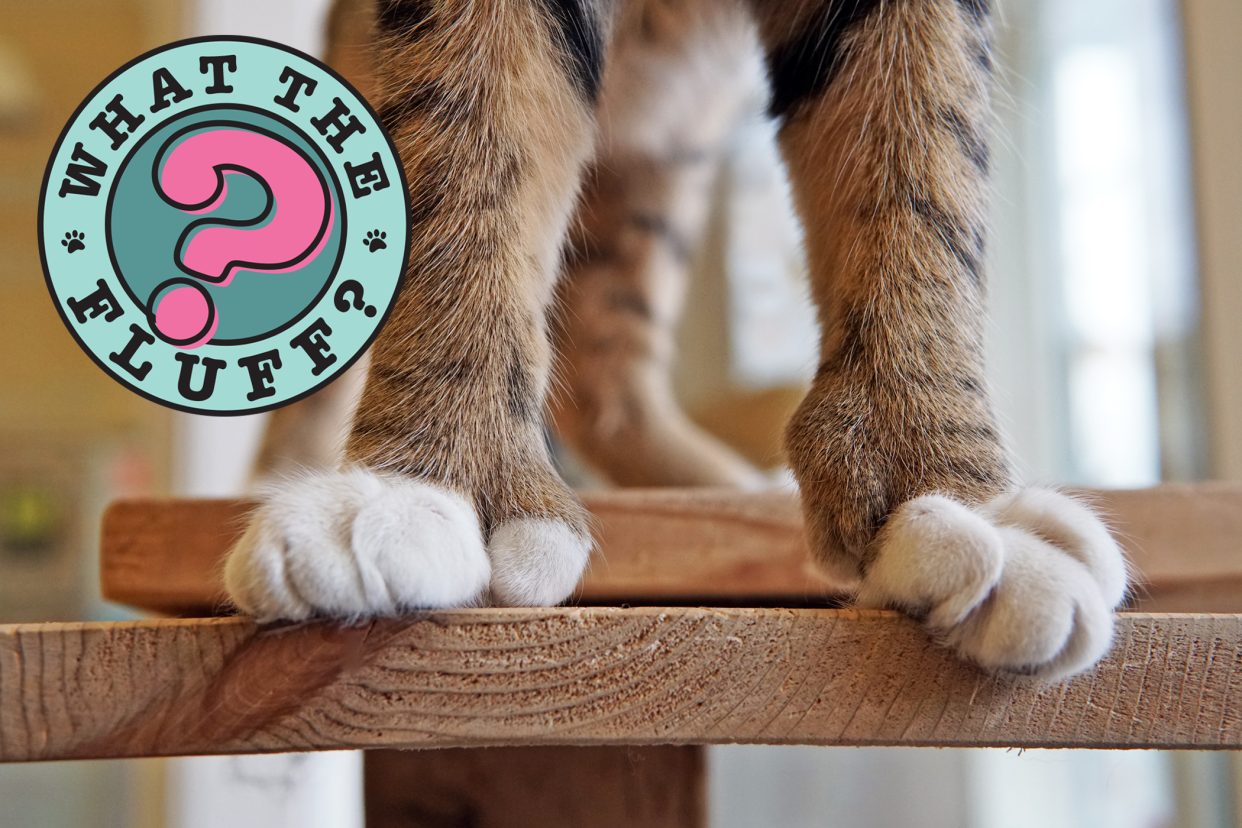A Polydactyl Cat? What's That?

GSchrempp / Getty
If you hold tight to the belief that less is more, polydactyl cats—also known as mitten cats and Hemingway cats—may give you a reason (or perhaps several of them) to reconsider your position. That's because these furry phenomena boast more than the normal number of toes on one or more of their paws. And instead of looking out of place, the extra digits somehow manage to make these cute cats appear even cuter.
To learn what's behind these super supernumerary-toed felines, we spoke with Ariel Breden, LVT, of Feline Veterinary Medical Center in Ardsley, N.Y.
What Is a Polydactyl Cat?
Normal cats have five toes on each of their front paws and four on each of their hind paws for a total of 18 furry feline digits. Polydactyl cats, on the other hand (pardon the pun), have more than 18 toes. (The word "polydactyl" comes from the Greek word "polydaktylos," in which "poly-" means many and "daktylos" means digit.)
These extra digits are an autosomal dominant trait, meaning only one parent needs to carry the mutated gene for their offspring to inherit the condition. Making these marvels even more interesting is the fact that this trait has variable expressivity. In other words, it doesn't affect all cats the same way.
"A polydactyl cat could have just one extra toe, or every paw could be affected," Breden explains. "Some cats will even have double the normal amount of toes on one paw. It isn't something that's consistent across the board. Each case is different." However, the Merck Veterinary Manual notes that preaxial polydactyly, in which the extra toe is located on the medial side of the paw (i.e. the thumb side) is far more common than lateral polydactylism, or an extra toe on the outside of the paw. Polydactyly is also more likely to affect the front paws.
Can Any Cat Have the Polydactyl Genetic Mutation?
Any cat of any breed can carry the gene that causes polydactyly, though the condition appears to be more common in Maine coon cats. Cats who carry the mutated gene don't always have polydactylism, which is why Breden says that two cat parents without the trait can create a kitten with extra toes. However, she adds that a kitten will be more likely to have the condition if at least one of the parents has polydactyly.
Are There Any Advantages or Disadvantages to Polydactylism?
Because polydactyly is technically a musculoskeletal disorder, you may be wondering if those excess toes cause cats any harm. For example, are they in pain? Does it change their personality? Do they have more health issues? Or perhaps you suspect that it's a superpower of sorts. (How many times have you wished for an extra hand when carrying groceries?)
In reality, the effect the condition has on felines—both negative and positive—is typically mild. "The advantage with polydactyl cats is that they're very cute," Breden says. "The disadvantage is that you have to be particularly careful and diligent with trimming their nails." She explains that this is because the extra toes are often located close to the paw pads. They are thus more susceptible to growing into the paw pad, which can cause infections or ingrown nails.
Because nail trimming is so essential to the overall wellbeing of polydactyl cats, Breden tells pet parents to get their special kitties comfortable with their feet being handled—the earlier, the better. This can be done by gently massaging and playing with a cat's paws while giving them treats.
RELATED: The 6 Best Cat Nail Clippers for Quick and Comfortable Trimmings
Why Are They Called Hemingway Cats?
The reason why polydactyl cats are sometimes referred to as mitten cats is fairly obvious, but the connection between these fantastic felines and the famed author of "The Old Man and the Sea" may have you scratching your head a bit.
According to the Ernest Hemingway Home and Museum in Key West, Fla., the destination's namesake was once given a white cat with six toes by the captain of a ship. Hemingway named his companion Snow White, and some of her descendants are still living on the museum's grounds today—a space they share with several other cats. In fact, the museum states that it's currently home to approximately 60 polydactyl cats!
